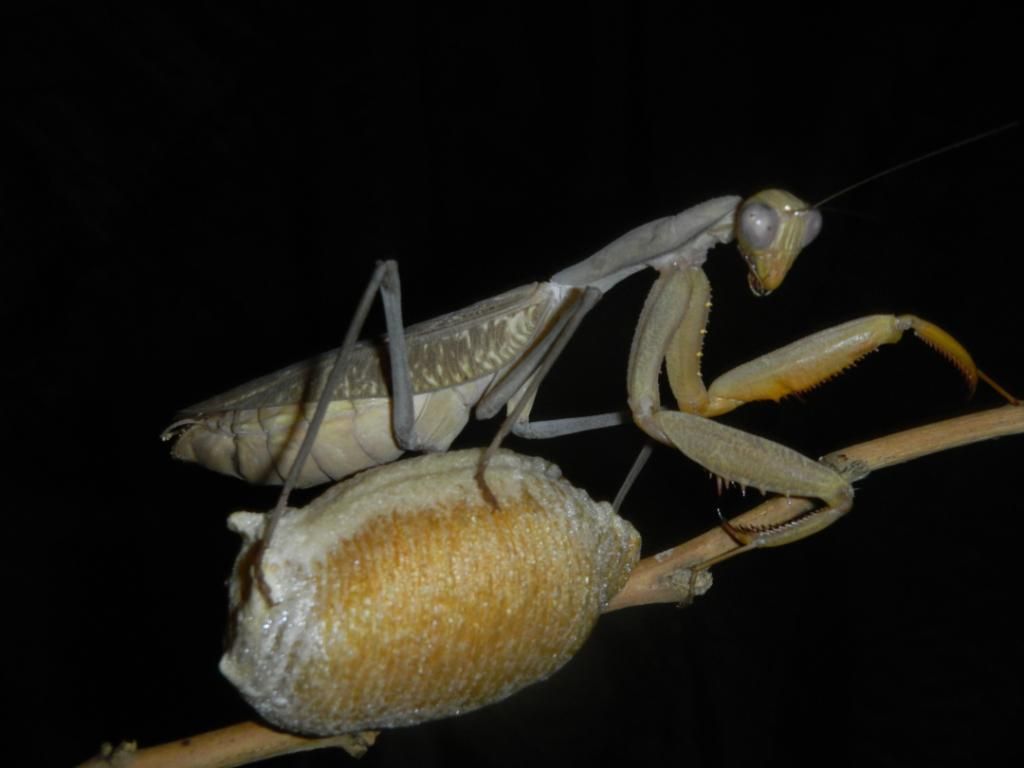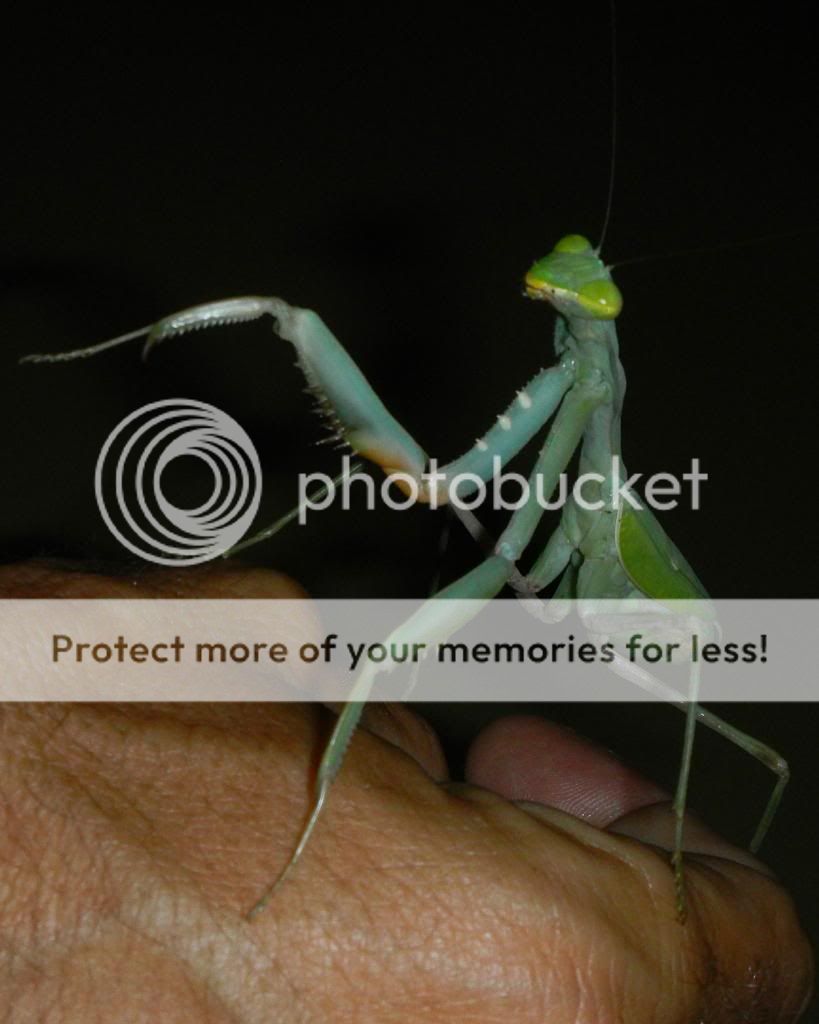Sphodromantis spp. (African Mantis)
Introduction:Most common in culture:
Sphodromantis sp. "blue flash"—known for the blue marking on the inside of femur.
Sphodromantis lineola
Sphodromantis viridis
These are rather large mantises. The adults reach 3-3.5 inches long and are very bulky in appearance. They have the typical mantis look to them. This genus is mainly from Africa and nearby parts of Europe.(agent A)
Color: various hues of brown and green.
Difficulty level: beginner.
Development:
Molting is rarely an issue with this species. Young nymphs should be misted often to prevent mismolts, but afterwards, they will molt readily without even showing signs of it. Molts may only be five days apart, and males molt six times, females molt seven.(agent A)
- Rate of growth and factors involved
- Longevity
- Molting observations
With such an aggressive species, [cannibalism] is a given.(agent A)
- Degree of activity
- Dynamics of threat display
Housing this species isn't much of an issue. At L1 and L2, the nymphs can be kept together in large net cages with plenty of food. Cannibalism will still occur, but with such an aggressive species, this is a given. At L3 and older, until L5, 32oz deli cups or similar size containers work well. Very little is needed other than a paper towel substrate and mesh on the lid to hang from. 80oz deli cups will suffice from L5 until the final molt, though the mantis should be out in a net cage for the final molt.
(agent A)
- Temperature range and humidity levels
This mantis is an aggressive feeder. At L1, hydei flies can be used and nymphs start eating houseflies at L2. Nymphs should be fed regularly and will eat a lot of food. Crickets, flies, roaches, moths, spiders, and so much more can be used.(agent A)
Breeding:
Sexing is very easy even at earlier instars. Males have the eight abdominal segments while females only have six, and the ovipositor of the female is a very wide end segment with a split down the middle at the end.(agent A)
About 3 weeks after the final molt, assuming good feeding, adults are ready to pair up. This is a rather aggressive species and even adult males have a decent appetite. Males should be fed twice a week, females should eat daily. Pairing these guys up is simple when they are ready. Put the male in a large cage and let him settle, then add the female. He will quickly notice her but may be weary at first. However, within minutes, he will approach and quickly mount her. He connects soon afterwards, and mating can last 3-8 hours or even longer in some cases. After mating, females should be fed well and offered wooden sticks to lay ooths on. If weather permits, placement of the female on a live tree outside, in a rearing sleeve to prevent issues, can help the ooth laying process.(agent A)
Oothecae:
Females will lay large ooths every 3-5 weeks and will lay 4-6 in their life.(agent A)
Ooths of this species are large and require little more care than light weekly mistings. Room temperature suffices for incubation and 100-200 nymphs will hatch out after 4-6 weeks.
(agent A)
- Physical description and average size. Picture desired; include with other pictures at bottom of Care Sheet.
- Health Issues: infections or illnesses encountered.
- Additional Observations: pertinent information which doesn't neatly fit anywhere else.
- Photos: up to five may be posted at the bottom of the completed template. Please limit these photos to no more than one of an ootheca, two of nymphs(different instars), one of an adult female, and one of an adult male.

(photo: S. lineola by patrickfraser)

(photo: S. viridis by patrickfraser)
Contributors: agent A, jamurfjr, patrickfraser
Last edited by a moderator:



